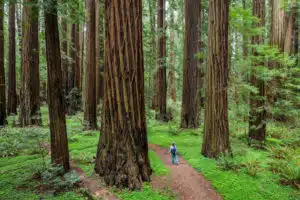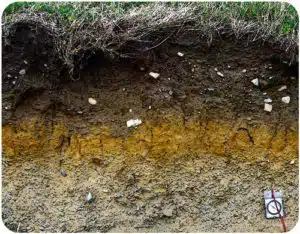The last few days have brought the biggest snowfalls in New York City, where I live, in quite some time after many years of quite mild winters or at least light on snow. One of the tiny consequences of these storms have been the flipping over of one of my planters where I have grown leafing broccoli – broccoli spigariello – the last few years. And so I’ll have to get more soil for the spring. But where will that soil come from? I mean I know where I’m going to order the twenty five pound bags from (malibucompost.com), but how does soil come to be?
While climate change charges on there are some who, addicted to trying to find the bright side of things, say that while these rising temperatures will indeed cause more and more damaging storms the warming temperatures will also open up more tillable land further north in Canada and Russia and this new boom in agriculture will be a boon.
These never cultivated grounds of the near arctic latitudes are truly terrible for agriculture. Poor and thin soil studded with stones. Fertile soil does not manifest just because there is a desire to plant and grow. There isn’t a lot of new land being made in the world to learn about soil being made from scratch but geologist William Fyfe studied volcanoes at different latitudes to discover how fast fresh lava gathers soil and turns into soil. He found that it takes about one thousand years for the first centimeter of fresh soil to gather in that kind of location. For the subarctic of Canada and Russia it might take ten thousand years of steady temperate weather for there to be enough soil to plant the kind of crops that modern humans desire and/or require. So this is bad news for the cheerleaders of “we’ll just farm there.” Up there it is caribou and musk ox that are able to transform the thin vegetation into anything that looks like food and they are hunted by wolf and wolverine and humans for just that reason. And those two animals are collectively the nourishers of the soil that is there.
While the soil in the subarctic northern taiga doesn’t look that fertile, you may think that rainforests, those bustling jungles full of monkeys and parrots and more insects than you can shake a stick at might be the very embodiment of fecundity but strangely the soil in the Amazon and in the great rainforests of Congo are also quite poor. It is strange but because of the incredible biodiversity everything that falls on the ground gets consumed incredibly quickly and the fruit or fallen plant matter or dead animals never get into the soil. The nutrition of the forest is in the plants and trees and the bodies of the animals themselves. This is born out in the constant cutting down of the Amazon. The rainforest is cut down and crops or cattle only can survive there for a year or two and then nothing else can grow hence more needs to be cut down soon enough.
But even the temperate forest is a delicate thing that requires constant feeding. The branches and leaves that fall need to stay there to decompose to keep the soil alive. This is recycling at its best. If too much of the underbrush and detritus gets cleared the forests struggle to make more soil.
William Bryant Logan writes in “Dirt: The Ecstatic Skin of the Earth”
“Consider the growth of a redwood tree on the Northern California coast. On the day Christ was born, the seed falls in the sand deposited and the bend of a river. The diving roots send out sugars that attract microbes that feed there, living, dying, and decaying. The young tree begins to drop its foliage, bark, and cones, along with the bodies of insects and other animals that live in it. Organic acids in the soil water leach the iron and aluminum from the sand and begin to carry it deeper into the ground, creating distinguishable soil horizons. Two thousand years later, the soil is thirty feet deep, it erodes less than one millimeter per century, and the redwood rises 350 feet into the air. We picnic beneath it, leaving an apple core and some cheese rinds as offerings.
Yet the matter that has accomplished this miracle has been largely recycled. If all the litter that had fallen on the forest floor in that time had remained there, the tree would be standing sixty feet deep in the stuff. Instead, the mix of acid humus and still-integral fallen needles, cones, and twigs is a mere four inches thick, and has never been thicker. Its steady decay has fed the tree.”
But forests are not where the best soil lives and grows. The middle latitudes where prairies and similar terrain are can generate soil quite quickly. But even there if you just farm, the nutrition in the soil goes away quite with alacrity.
Soil comes from feeding a place. Soil comes from decay. Soil comes from endings. Soil, mythologically, poetically, and certainly biologically comes from all that died in that place. When you plant your seeds you don’t plant them in a pile other seeds you plant them in a hole in the collapsed endings of days. That ending is the cradle of life and all that you’d wish for a better day. That soil is what feeds you and every living thing. But it can’t just be taking forever.
So I’ll be getting bags of soil shipped to me because of the poverty of this time and the place I live. And soil needs feeding so I’ll have to feed the soil somehow to even attempt to make up for the hole I’m making in California where they are growing soil.
It is this kind of contending that informs how we proceed over here with Primal Derma. There are endings, limits, consequences, and realities that can’t be ducked. Our tallow is a manifestation of that.



